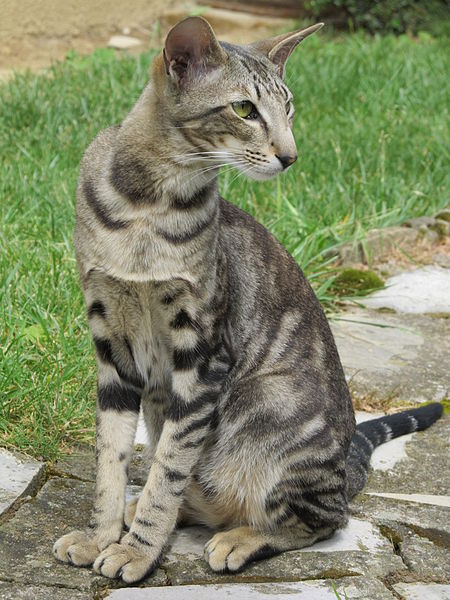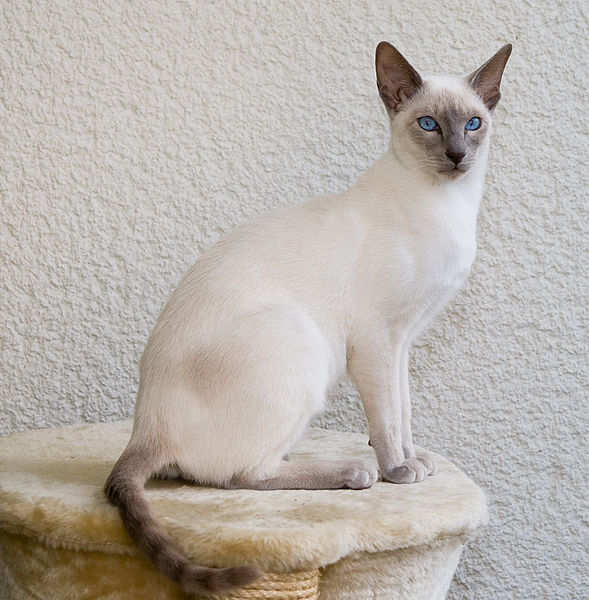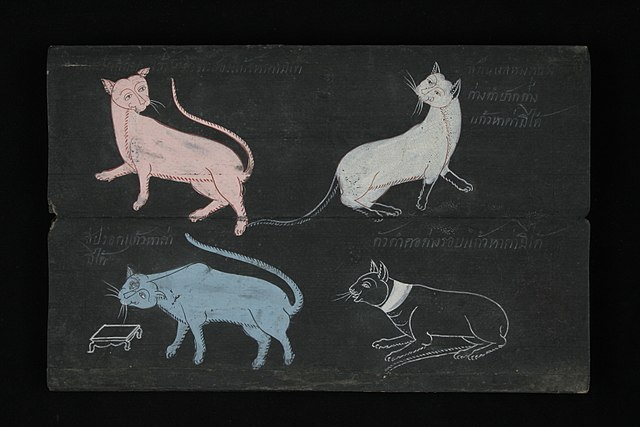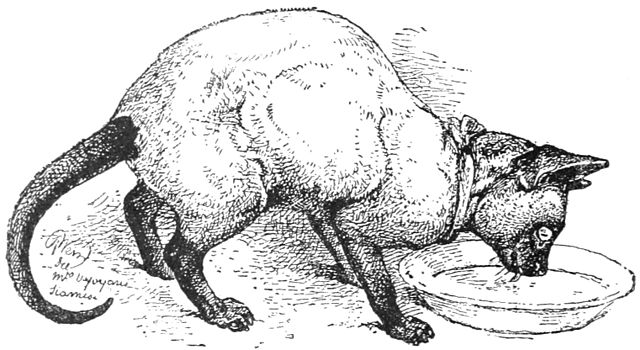The Oriental Shorthair is a breed of domestic cat that is developed from and closely related to the Siamese cat. It maintains the modern Siamese head and body type but appears in a wide range of coat colors and patterns. Like the Siamese, Orientals have almond-shaped eyes, a triangular head shape, large ears, and an elongated, slender, and muscular body. Their personalities are also very similar. Orientals are social, intelligent, and many are rather vocal. They often remain playful into adulthood, with many enjoying playing fetch. Despite their slender appearance, they are athletic and can leap into high places. They prefer to live in pairs or groups and also seek human interaction. Unlike the breed's blue-eyed forebear, Orientals are usually green-eyed. The Oriental Longhair differs only with respect to coat length.
A blue-eyed white Oriental Shorthair kitten. The line of the nose, eyes, and middle of the ear form a triangular wedge.
Green-eyed blotched or “classic” tabby Oriental adult
A green-eyed Oriental tabby
A bicolor Oriental mother with her litter of kittens
The Siamese cat is one of the first distinctly recognised breeds of Asian cat. Derived from the Wichianmat landrace, one of several varieties of cats native to Thailand, the original Siamese became one of the most popular breeds in Europe and North America in the 19th century. Siamese cats have a distinctive colourpoint coat, resulting from a temperature-sensitive type of albinism.
Lilac-point Siamese (Oriental)
Suphalak cat, Siamese cat, Korat cat and Ninlachak cat in Tamra Maew (The Cat-Book Poems) are thought to originate from the Ayutthaya Kingdom (1351 to 1767 AD). Over a dozen are now kept in the National Library of Thailand.
While this show quality specimen from 1960 still exhibits relatively moderate characteristics, the breed standard was setting the stage for the modern Siamese, with its call for a "dainty, long and svelte" body, a long head that "taper[s] in straight lines from the ears to a narrow muzzle", "ears large and pricked, wide at the base" and tail "long and tapering".
A classic seal point Siamese prize winner. Note the darker colours at the extremes, e.g. face/ears, tail and legs.








